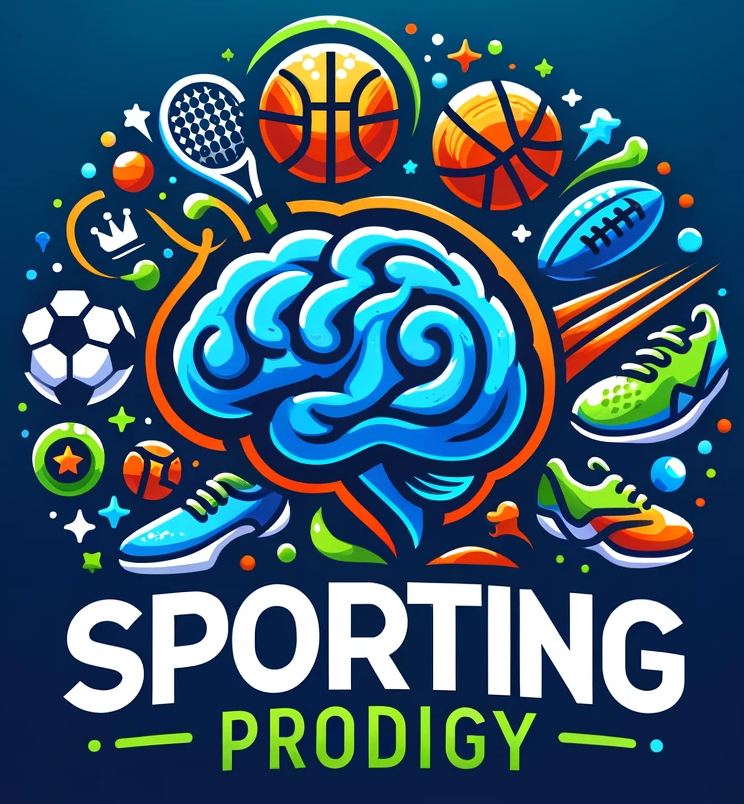Are you passionate about sports and curious about what drives athletes to excel? If so, you’re in for an exciting journey as we explore the diverse theories of motivation in sports. From the adrenaline-pumping thrill of competition to the dedication required for consistent training, understanding motivation is the key to unlocking your full athletic potential.
What is Motivation?
Before we dive into the theories, let’s start with the basics. Motivation is the force that propels us to take action and achieve our goals. It’s what gets athletes out of bed for early morning practices, helps them push through challenges, and fuels their determination to reach the top.
Maslow’s Hierarchy of Needs
One of the most well-known theories of motivation is Abraham Maslow’s Hierarchy of Needs. Maslow proposed that human needs can be arranged in a hierarchical order, with basic physiological needs at the bottom and higher-order needs such as self-actualization at the top. According to Maslow, individuals are motivated to fulfill lower-level needs before progressing to higher ones. This theory suggests that factors such as food, shelter, safety, belongingness, esteem, and self-actualization play crucial roles in driving human behavior.
Herzberg’s Two-Factor Theory
Frederick Herzberg introduced the Two-Factor Theory, also known as the Motivation-Hygiene Theory, which distinguishes between factors that contribute to job satisfaction (motivators) and those that lead to dissatisfaction (hygiene factors). Motivators, such as recognition, achievement, and responsibility, are related to the content of the work itself and can enhance intrinsic motivation. On the other hand, hygiene factors, such as working conditions, salary, and company policies, are extrinsic factors that, when lacking, can lead to dissatisfaction but do not necessarily motivate individuals when present.
Expectancy Theory
Victor Vroom’s Expectancy Theory focuses on the relationship between effort, performance, and outcomes. According to this theory, individuals are motivated to exert effort if they believe it will lead to successful performance, which in turn will result in desired outcomes. Key components of the Expectancy Theory include expectancy (belief that effort will result in performance), instrumentality (belief that performance will lead to outcomes), and valence (value attached to outcomes). The theory emphasizes the importance of perceived links between effort, performance, and rewards in driving motivation.
Equity Theory
Proposed by J. Stacy Adams, Equity Theory revolves around the concept of fairness in social exchanges. According to this theory, individuals compare their input-to-output ratio (effort to reward) with that of others and seek to maintain a sense of equity. When individuals perceive inequity, whether it be underpayment or overpayment relative to their contributions, they may experience feelings of injustice and reduced motivation. Equity Theory highlights the significance of perceived fairness in shaping motivational levels and behaviors.
Goal-Setting Theory
Edwin Locke and Gary Latham developed the Goal-Setting Theory, which emphasizes the importance of setting specific, challenging goals in driving motivation and performance. According to this theory, clear and challenging goals can direct individuals’ efforts, increase their persistence, and enhance their performance. Additionally, feedback and task complexity play crucial roles in goal attainment. Goal-Setting Theory provides practical guidelines for managers and individuals alike to enhance motivation and productivity in various contexts.
Self-Determination Theory
Self-Determination Theory, proposed by Edward Deci and Richard Ryan, focuses on intrinsic motivation and the fulfillment of basic psychological needs. According to this theory, individuals have innate psychological needs for autonomy, competence, and relatedness. When these needs are satisfied, individuals experience intrinsic motivation and engage in activities for their inherent enjoyment and fulfillment. Self-Determination Theory highlights the importance of autonomy-supportive environments in fostering intrinsic motivation and well-being.
This theory emphasizes the importance of autonomy and intrinsic motivation. Athletes who genuinely enjoy their sport and have a sense of control over their actions are more likely to stay motivated. Loving what you do can be a powerful driving force.
Instinct Theory
Instinct theory suggests that motivation is innate and instinctual, meaning it’s a natural part of who we are as human beings. It’s the inherent drive within us that pushes us to do certain things. In sports, this theory can explain our natural urge to compete and strive for victory.
For example, think about a friendly game of soccer in the park. Even without formal training, when you see a ball and a goal, you instinctively want to kick the ball and score. This drive to participate in sports is deeply rooted in our human nature.
Drive Reduction Theory
According to the drive reduction theory, motivation arises from the need to reduce discomfort or maintain homeostasis. Think of it as a car running low on fuel – you’re motivated to fill up the tank to satisfy your body’s needs. In sports, athletes are motivated to perform well to reduce the tension and anxiety associated with competition.
Imagine a track athlete who feels nervous before a race. This anxiety can be seen as a “drive” that motivates them to perform at their best. Once the race begins and they start running, the drive is gradually reduced as they focus on their performance, eventually leading to a sense of accomplishment.
Arousal Theory
Arousal theory focuses on the optimal level of arousal, or excitement, that motivates an athlete. Some athletes perform better when they’re amped up and excited, while others excel in a calmer state. Finding the right balance of arousal is crucial for peak performance.
For instance, a sprinter in a 100-meter race may need a high level of arousal to explode out of the starting blocks, while a long-distance runner may benefit from a lower level of arousal to maintain focus and endurance over a more extended period.
Expectancy Theory
Expectancy theory is all about the belief that effort leads to performance, which then leads to desired outcomes. Athletes who believe that their hard work will pay off are more motivated to give their best in training and competition.
Let’s take the example of a young basketball player who diligently practices shooting free throws. They believe that their efforts in practicing will improve their free-throw percentage, which in turn will lead to more points scored during games. This expectation of improved performance motivates them to practice consistently.
Achievement Motivation Theory
For many athletes, the desire for achievement and success is a significant motivator. Whether it’s breaking records, winning championships, or simply improving personal bests, the pursuit of excellence keeps them going.
Think about a high jumper who aims to clear a new personal record height. The thrill of achieving that goal drives them to train tirelessly, overcome obstacles, and continue striving for greatness in their sport.
Social Learning Theory
Social learning theory suggests that motivation can be influenced by observing and imitating others. Young athletes often look up to role models in their sport, and their success can inspire and motivate them to achieve similar feats.
For instance, a budding tennis player may idolize a Grand Slam champion and study their matches to learn their techniques and strategies. Watching their role model’s success on the court can ignite a fire of motivation within them to work hard and reach similar heights.
Now that we’ve explored these seven intriguing theories of motivation with more detail and examples, you have a deeper understanding of what drives athletes to excel in the world of sports. Remember, motivation is a complex and dynamic force that varies from person to person. Whether you’re an aspiring athlete or simply a sports enthusiast, harnessing your motivation can be the key to reaching new heights in your athletic journey.
So, keep pushing yourself, stay inspired by your role models, and never stop pursuing your passion for sports!
More Theories of Motivation
Motivation is a complex subject and there are many more theories. Here’s a list of Other theories that might be of interest if you want to learn more:
- Incentive Theory: People are motivated by external rewards or incentives, such as athletes aiming for victory trophies.
- Cognitive Dissonance Theory: Motivation arises when beliefs or attitudes conflict with actions, pushing individuals to reduce discomfort.
- Self-Efficacy Theory (Bandura): Belief in one’s ability to perform tasks impacts motivation, as seen in athletes with high self-efficacy.
- Attribution Theory: How individuals explain their successes and failures influences their motivation in sports.
- Motivation-Hygiene (Mot-Hy) Theory (McClelland): Focuses on the need for achievement, power, and affiliation as motivators.
- Theory of Planned Behavior (Ajzen): Attitude, social acceptability, and perceived control influence motivation for specific behaviors, including sports participation.
- Drive-Reduction Theory (Hull): Motivation arises from the need to satisfy biological needs, like hunger and thirst.
- Humanistic Theory (Rogers): Motivation stems from the pursuit of self-actualization and personal growth.
- Expectancy-Value Theory (Vroom): Motivation results from the expectancy of effort leading to performance and performance leading to valued outcomes.
- Operant Conditioning (Skinner): Reinforcement and punishment influence behavior and motivation, particularly in sports training.
- Social Cognitive Theory (Bandura): Observational learning and social influences impact motivation in athletes.
- Cognitive Evaluation Theory (Deci): External rewards and controls can enhance or undermine intrinsic motivation, depending on their effect on autonomy.
- Drive Theory (Woodworth): Motivation arises from unmet physiological needs and internal drives, pushing individuals to act.
- Evolutionary Theory: Motivations like survival, reproduction, and social bonding have evolved to enhance an individual’s chances of passing on genes.
- Self-Regulation Theory: Goal-setting, progress monitoring, and self-control are essential components of motivation for achieving objectives.


